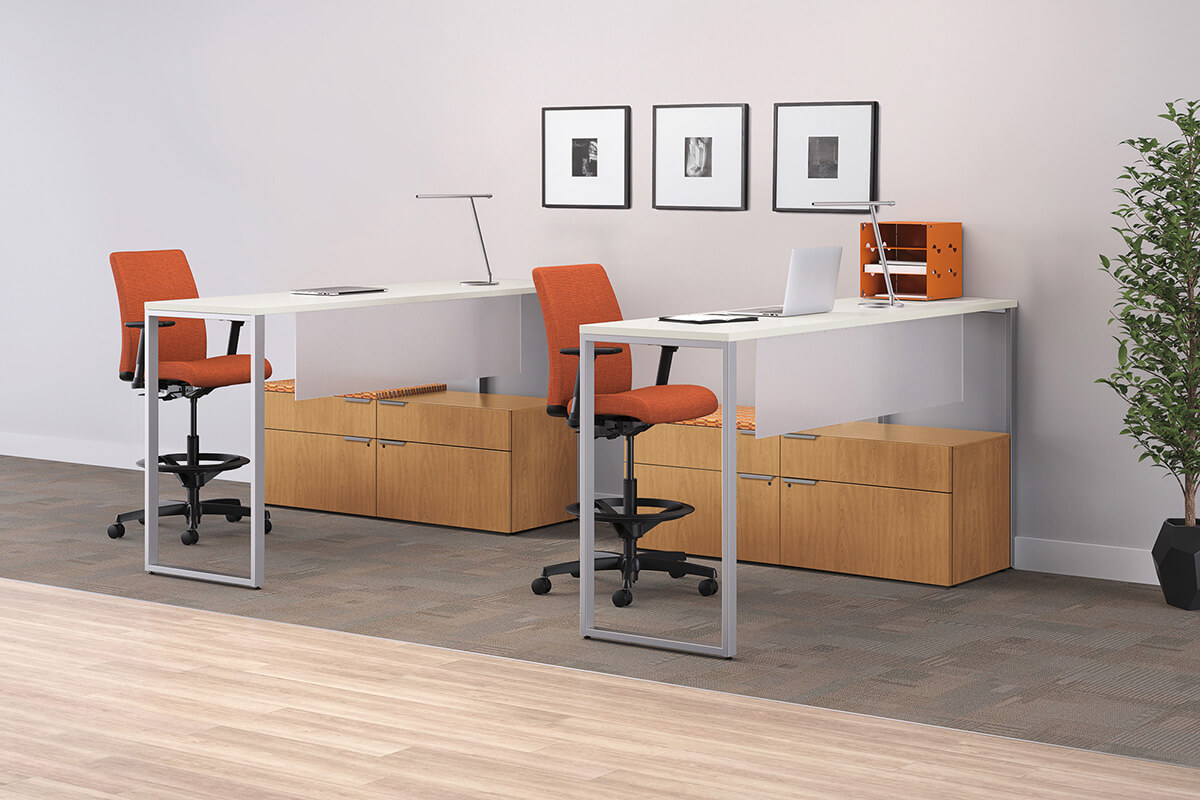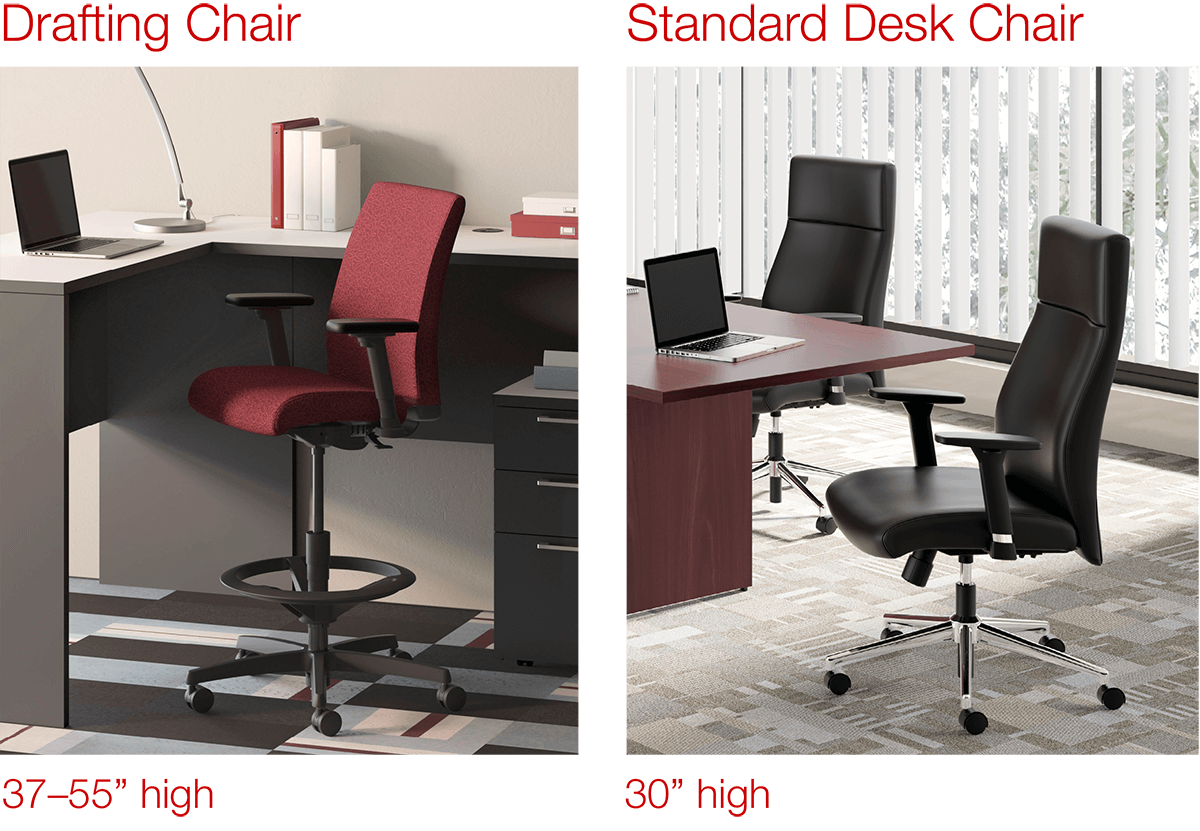What is a Drafting Chair?

Whether you work at an architectural firm or a graphic design studio, drafting chairs are as important a tool to their users as a computer is in getting the job done. These impressive looking chairs are specifically designed for maximum effectiveness for engineers, artists, or people in any line of work who find it easier to work on an elevated surface, such as a countertop lightbox, drafting table, or standing desk.
What is a drafting chair?
A drafting chair is a very tall chair equipped with extra padding throughout–with or without armrests. You’ll know it by the telltale footrest “ring” situated just above the feet of the chair since most traditional footrests would not work with a chair of its height.
Drafting chairs initially gained popularity with engineers who spent long hours on uncomfortable drafting stools, designing blueprints. As these stools offered little support, drafting chairs emerged with far more comfort and functionality that worked with engineers–instead of against them. Compared to unsupportive drafting stools, drafting chairs were deemed the best solution for back problems among engineers and other professionals, heralding the switch.
These chairs are able to swivel to enable the user to reach across a desk for supplies, and have a built-in footrest to offer greater lower back and pelvic support to the user when sitting.
Drafting chair height: Why are they so tall?

The height of a drafting chair typically ranges from 37” to 55” and can be raised up or down with a pneumatic lever on the underside of the chair’s seat. This is high compared to the average height of a standard desk chair, which hovers around 30”.
Since drafting chairs are usually used with high workspaces—such as raised lightboxes, drafting desks, or elevated workbenches—they need to be taller to enable the user to work at a comfortable height in relation to their desk’s surface.
Drafting chairs and standing desks
In recent years, standing desks have become very popular among office professionals. However, as several ergonomics experts have mentioned, it’s best to alternate between periods of sitting and standing when using a standing desk. Due to its height, drafting chairs help make the transition between sitting and standing at the same desk all day much easier on the back, feet, and neck.
Drafting chairs may look imposing, but don’t be intimidated by these gentle giants of the office chair world. They offer a number of benefits to professionals across all industries, not just engineers and designers.

